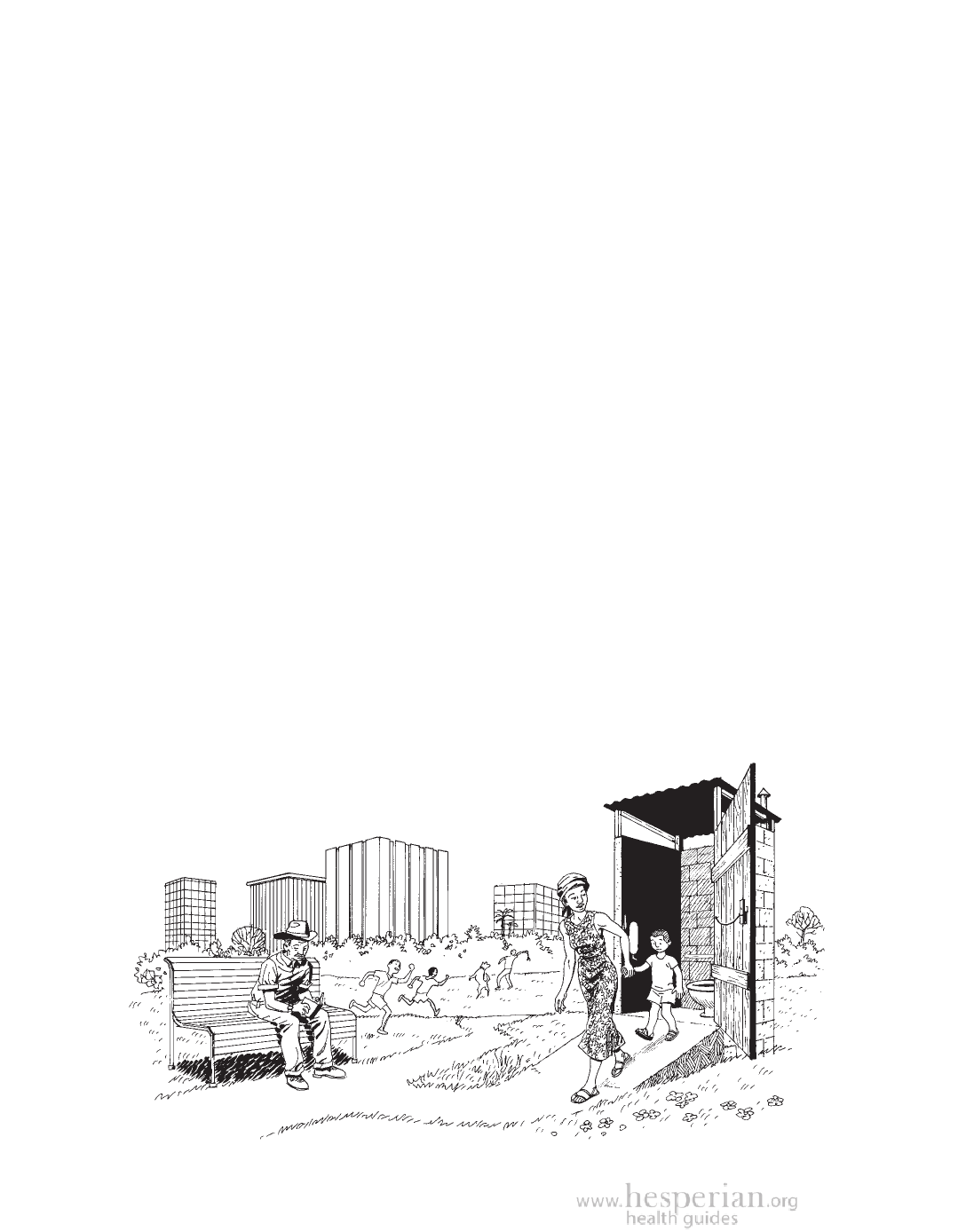
114 Building Toilets
Sanitation for Cities and Towns
In cities and towns, health problems can spread very quickly. It is difficult to
improve sanitation services in crowded cities and towns without a lot of help
from governments, NGOs, and other partners. This book can offer only some
guidelines to help think about possible solutions.
The main barriers to good sanitation services in cities are:
• physical. Often, sanitation is considered only after neighborhoods and
settlements have roads, electricity, and water. Yet once a city is built, it is
much harder to plan for and build toilets and sewage systems.
• economic. Sewage systems and public toilets are costly to build and
maintain. If there is little government support, it is difficult to afford
sanitation.
• political. Local governments may not want to deliver services to informal
settlements and poorer neighborhoods. And there may be laws that prevent
people from planning and building their own toilets and sewage systems.
• cultural. People and officials in cities often want flush toilets and costly
sewer systems, making it difficult to agree on more sustainable and
affordable alternatives.
Creative solutions for healthier cities
Any kind of toilet, including the ones in this guide, can be built and used in
cities. And if sanitation services are combined with parks, urban farming
(see page 310), resource recovery and recycling (see Chapter 18), and clean
energy (see Chapter 23), cities can become healthier and more
pleasant places to live. When city governments work
with neighborhood groups to come up with creative
solutions, the result will be cleaner, healthier cities.
A Community Guide to Environmental Health 2012